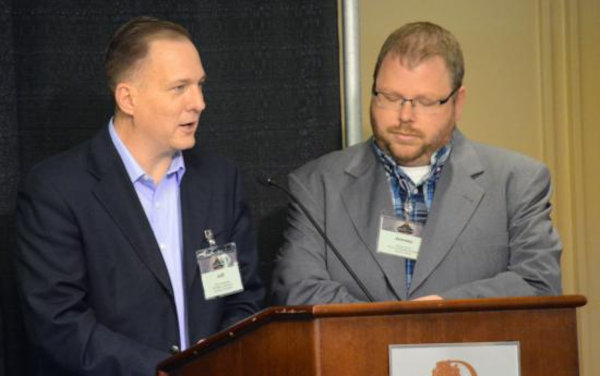Years of financial troubles have produced an overwhelming deficit for the Yellowstone Conference.
KATHY L. GILBERT
United Methodist News Service
Yellowstone Conference is reporting an “unprecedented” deficit that could end normal operations of the conference by the end of the year.
Aging congregations, aging buildings and lower levels of participation in the church are some of the reasons for the deficit cited in a report to the annual conference by the Rev. Jeremy W. Scott, Vital Congregations Developer for the Mountain Sky Area. The area includes the Yellowstone and Rocky Mountain conferences.
“Reaction to the episcopal election of the church’s first openly gay bishop is only one of many factors,” the report said. Bishop Karen Oliveto, elected a bishop by the Western Jurisdiction in 2016, is the denomination’s first openly gay bishop. She leads the Mountain Sky Area.
Scott noted the conference had faced financial problems under Bishop Elaine Stanovsky, Oliveto’s immediate predecessor, too.
“Any idea that any single issue or person is behind our current situation is disingenuous and opportunistic,” Scott said.
Scott and the Rev. Jeff Rainwater, superintendent of the Wyoming district, presented the report “Financial Crisis” during the June 8-10 annual conference session. The report stated, “Unprecedented financial challenges have emerged in the last five months radically challenging our short term sustainability.”
A Harvest Time Fund taken during the meeting raised $37,000 in pledges and donations. Scott said donations since the meeting brought that total to $39,000.
“In addition to the very generous response of those who attended the Yellowstone Annual Conference to the Harvest Time Fund, we have seen an increase in giving to mission shares in the month of June,” said Rainwater. “We received $25,000 over our monthly average of the previous five months.”
The conference is launching a fundraising campaign with the goal of raising $150,000 by the end of the year.
“I am optimistic we will make that goal,” Scott said.
Oliveto said this challenge will show United Methodists what faithful stewardship in the 21st century will look like.
“I really see this as an opportunity for us as a conference to explore our theology of stewardship,” Oliveto said in an interview with United Methodist News Service. “My hope is that this helps us grow generous givers for the next generation, not just within local churches, but also through our connection as United Methodists so that all our ministries can thrive.”
“As the smallest regular annual conference in the U.S., we’ve been long aware that those trends would hit us harder and sooner than most.” ~ Jeremy Scott
The finance report showed the conference heading toward a forecast deficit of $303,356 by the end of 2017. The conference has been aware of looming financial trouble for several years. In 2011, the United Methodist General Council on Finance and Administration did an assessment of the conference and found the future was very uncertain, Scott said.
Scott said that Bishop Stanovsky, then episcopal leader for the two conferences, formed a team in 2012 to look at the sustainability of Yellowstone Conference and see if the time was right for merger with Rocky Mountain. At the 2016 meeting of the Western Jurisdiction, both conferences petitioned the jurisdiction for permission to create a new conference.
Work is continuing on creating the new annual conference, Scott said. Six teams have been formed to draft portions of the plan.
“We have long recognized that there would come a time when slow decline would speed up,” Scott said.
Scott cited a paper called the “Death Tsunami,” written by the Rev. Lovett H. Weems Jr., professor of church leadership and director of the Lewis Center for Church Leadership at Wesley Theological Seminary in Washington. Weems predicted between 2019 and 2050 there will be more deaths and a higher death rate than at any time since the 1940s. He said the majority of those deaths will be older non-Hispanic whites and African-Americans.
“As the smallest regular annual conference in the U.S., we’ve been long aware that those trends would hit us harder and sooner than most,” Scott said.
The rest of the church in the United States is dealing with the same trends, he said.
“Yellowstone is in many ways, the canary in the coal mine for the larger church,” said Scott.
Last Updated on July 16, 2017

